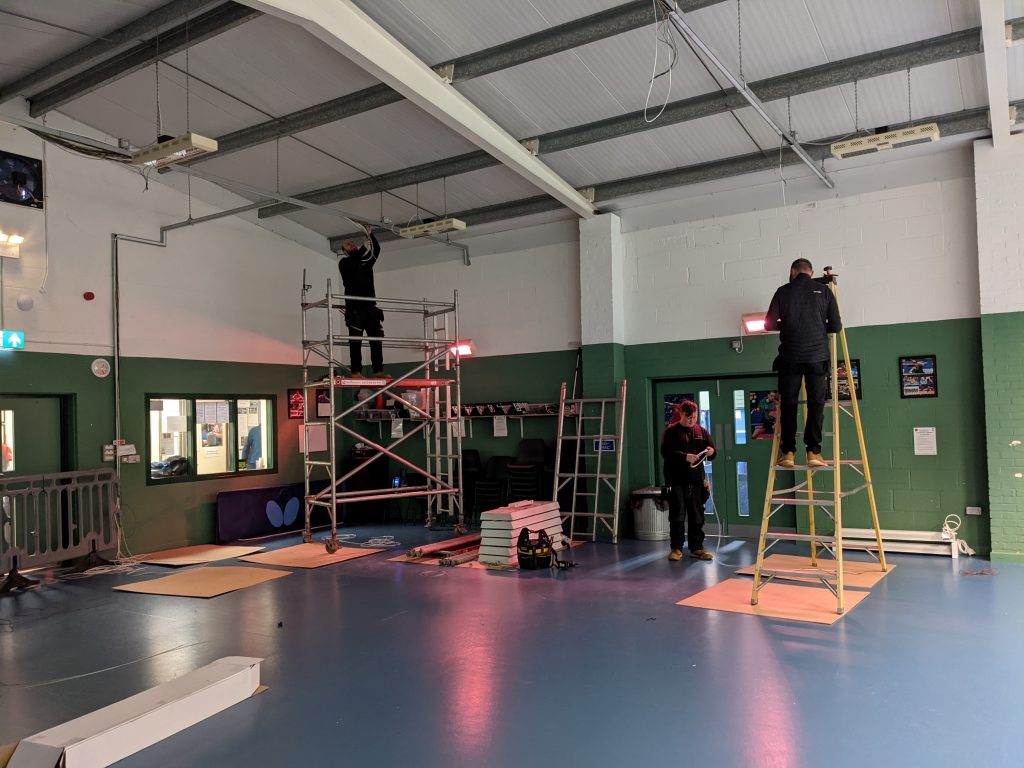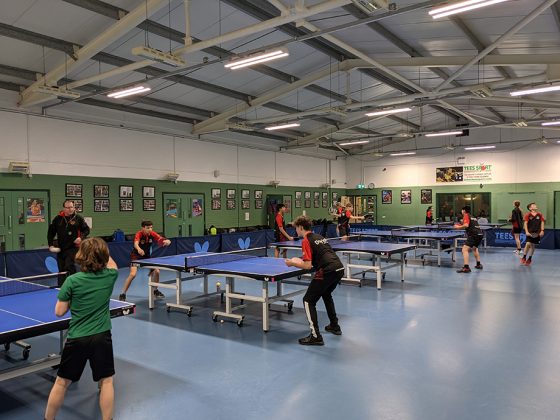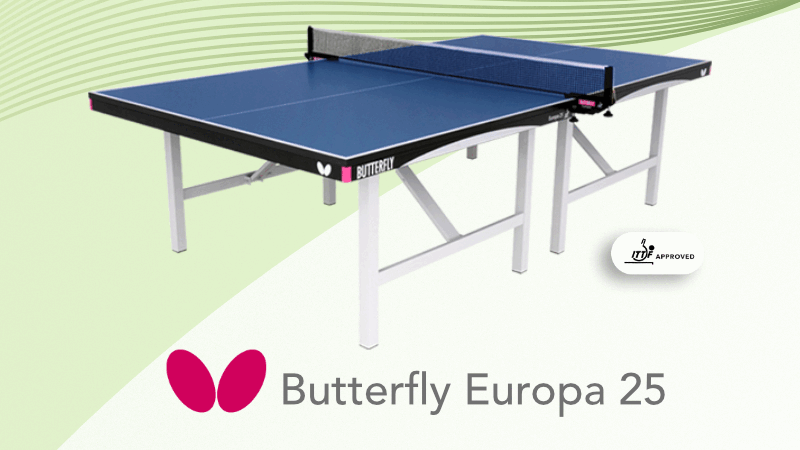Draycott & Long Eaton TTC has completed a £20,000 lighting project which could save it thousands of pounds in energy costs.
Over the last few weeks, the lights throughout the club in Derbyshire have been upgraded to high efficiency LEDs.
Lighting in each of the playing halls is independently dimmable to suit a range of activities and, depending on table layout, can achieve illumination levels of well over 1200 lux, easily meeting international standards.
The efficiency of LEDs, together with the dimmable flexibility, means the club could save more than 50% of its electricity consumption.
The club decided early in 2022 to replace its excellent but expensive lighting, with the key objective being a major reduction in long-term electricity use to both reduce its carbon footprint and running costs.
The club was conscious to preserve its reputation for having some of the best table tennis lighting in the country and investigated a range of lighting proposals from approved suppliers and pursued grant opportunities from various funding partners.
Last August, the club was awarded a grant of £10,000 from the Low Carbon Energy Fund of East Midlands Airport and took the decision to match that with a similar amount from the club’s reserves.
The installation of the new lighting, completed last month, sees the club well-placed to cope with a four-fold increase in its electricity tariff which would otherwise see its costs increase from £6,000 to £24,000 in 2023.
Table Tennis England Area Manager Chris Newton said of the project: “Having seen the impact LED lighting can have at major table tennis events around the world it’s a big step forward for a table tennis club to bring their facilities up to this enhanced level.
“In addition to this, and in this tough financial climate, the cost savings of running LED lighting over standard lighting is significant and will reduce electricity usage hugely.”
The lighting is the first stage in a club refurbishment plan that will also see the replacement of the specialist flooring in the two playing halls later in the year. These projects will help restore the club’s facilities to the best-in-class status it enjoyed following the club’s original redevelopment in 2006 and will support the club’s future for years to come for members, visitors and the local community.






